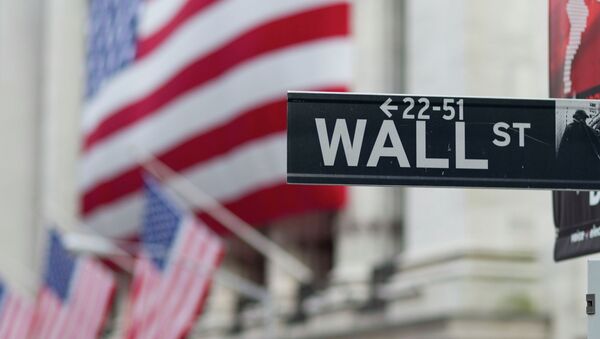Kristian Rouz — During the first two weeks of 2016, the US financial markets performed worse than most pessimistic previous forecasts would suggest.
Stocks across most sectors were decimated as global oil prices continued their fall below the $30/bbl threshold, while concerns over mainland China’s economic prospects weighed on expectations of global growth, hitting the US-based multinational corporations in turn. International headwinds intensified after the European stock markets on Friday dropped to 20% below their April 2015 highs.
Meanwhile, most investors, while being generally pessimistic of further market movements, do not see the 2008 scenario unraveling again due to a healthier real economy and stricter governmental regulations.
US stocks have been retreating in the first two weeks of 2016, currently averaging at 12% (S&P 500) below their May records highs (posting a massive 8% slide in just past two weeks). Yet, it is hardly the right time to buy, as US stocks might plunge an additional 10% to 15% from where they are now as key market components, equity value, credit and commodities are all poised to go down.
“It comes down to one basic fear, which is the global economy,” Russ Koesterich, of wealth management firm BlackRock Inc. said. “What people are afraid of is this isn’t investors overreacting, but reflects a fundamental deterioration in growth.”
The current decline in stocks follows December’s meltdown in the US junk bond market with Third Avenue mutual fund suspending payments that month. The entire situation is largely attributed to the decline in the US shale oil industry, short on revenues and investment amidst the ever-declining crude prices.
The US mining and oil sectors are among the worst performers thus far, however, as fuel prices are closely linked to the global growth outlook, largely dependent on the mainland China situation, the downward trend might reverse as well. That said, there is hardly a financial crisis in the US, as macro fundamentals are relatively strong, and it is only the market dumping the once overpriced assets.
The main sources of moderate optimism come from the understanding of fundamentals. The consumer sector, driving the lion’s share of the US economy, might accelerate as households increase spending the money they save on cheaper petrol. The Federal Reserve might opt to postpone further tightening or even roll rates back to their accommodative near-zero levels.
Underlining the increased risk to market stability, high-yielding bonds (or junk bonds) slid in value, with average yield rising from 5.7% in early 2014 to their current 9.1%, according to Barclay’s data.
Meanwhile, the US stock market earnings are in a recession, having dropped 4.7% in Q4, a second consecutive quarter of decline. Current expectations place stock profits for all S&P-listed enterprises at zero. Even though profit growth is expected at 7.5% in 2016, the current reading was revised down from 10.3% as estimated in October.
The stocks slide will negatively affect the US inflation index, thus marring the overall US growth prospects. Moreover, the current stocks rout indicates a decline in Federal Reserve policy efficiency: even though the December hike in rates and pessimistic data might have been a coincidence, many market participants might think otherwise.




